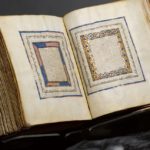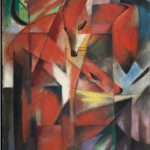
Kópavogur, Iceland.- On the occasion of the centennial anniversary of the biirth of artist Barbara Árnason (1911-1975), a major retrospective of her work opened at the Gerdarsafn Art Museum in Kópavogur. The popularity and importance of this English-born artist to the development of twentieth century art in Iceland was demonstrated when the exhibition was opened by the country’s President, Ólafur Ragnar Grímsson. The exhibition will remain on view until 5 June. Over 250 works by the artist are on display including Christmas cards, other illustrations, prints, watercolors and textile work made from Icelandic wool as well as numerous illustrated books.
Many of the works on show are privately owned and have never before been shown in public. The ground floor of the Gerdarsafns Art Museum shows works illustrating how Barbara Árnason laid the foundation for Icelandic art prints and why she is now considered among the pioneers in the field in the country. Árnason’s watercolor work is well represented, with the first floor exhibition gallery showing a selection from early works painted on her first visits to Iceland to her famous paintings of children and animals. Árnason’s works with wool, which blended art and fashion (and which she regularly exhibited at Paris fashion shows) have the museum’s east gallery to themselves.

Barbara Árnason was born in Petersfield, Hampshire, one of identical twins (her sister, Ursula Moray Williams, went on to become a well-known children’s author and illustrator), both her parents were teachers. Brought up by governesses, by the age of nine both children had written and illustrated their own books for the family to enjoy. She and her sister both studied at Winchester College of Art, though Ursula left after a year to concentrate on her writing, Barbara continued her studies and subsequently attended the Royal College of Art in London.
Initially working in wood block prints, Barbara became an illustrator after graduating. Shortly after that, she was asked to illustrate a series of books retelling the Icelandic sagas, which sparked her interest in Iceland. She traveled to Iceland in 1936 where she met sculptor and painter Magnús Á. Árnason. They married in 1937 and that same year she moved to Iceland. For the rest of her life, Barbara remained based in Iceland (though making numerous trips to Mexico, another country that she developed an affinity for), where she produced a vast catalogue of work in multiple mediums, from wood block prints to textiles (which attracted interest from Pierre Cardin).

The town of Kópavogur (a short distance to the south of Reykjavik) established a culture fund and began collecting art works on the occasion of its tenth anniversary in 1965. Kópavogur Art Museum-Gerðarsafn opened in 1994 in an impressive building designed by the architect Benjamín Magnússon. Gerðarsafn is a progressive art museum collecting and exhibiting modern and contemporary art. The museum is dedicated to the memory of (and named after) the sculptor and stained-glass artist Gerður Helgadóttir (a pioneer of three dimensional abstract art and architectural stained glass in Iceland. She died prematurely in 1975 at the age of 47). Her works constitute the most important part of the museum’s collection. Gerðarsafn hosts around 20 exhibitions annually, displaying works by Icelandic and foreign artists alike. There are three exhibition halls in the museum. Two on the upper floor with overhead lighting; while the third, a multi-purpose hall, is on the lower floor. The museum also has a bright and cozy café with a beautiful view. Visit the museum’s website at … http://www.gerdarsafn.is







